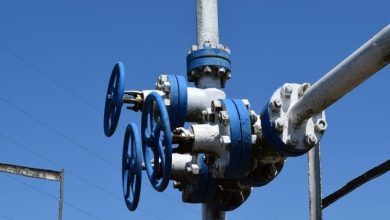Trussed Roof

Basically, the truss is made of angle steel guide. or T-shaped steel to cut to the length of each piece, then the house builder company บริษัทรับสร้างบ้าน will place it according to the position and then fasten the ends together with bolts or weld on the coupling plate. The design places the parts in a triangle. For trusses that are subject to heavy loads, I-shaped steel wings or steel tubes may be used instead.
- The parts are held together by welding or bolting on the couplings.
- Assembling the joints for fixing parts. There should be a central axis of each component running at the same point. to prevent further misalignment at the joint
- Because the simple knit structure is a structure in a single plane. When used, it must be anchored horizontally perpendicular to the truss plane. to prevent overturning
- Pipework or system work can be placed through the truss gap.
- Trusses at least 20′ (6,095) above the floor may be exposed. However, the building requirements should be checked first.
- The roofing or covering material may be made of metal or cement, laid across the batten.
- Steel C or W – Shape is a batten across the span between the trusses.
- If the batten is placed between the connection points, it must be designed so that the upper body of the building can bear the bending forces that occur.
- Steel plate.
- Steel columns or reinforced concrete columns.
- Approximately the total depth of the evil truss is equal to the 4th to the 5th division.
- Approximately the total depth of the parabolic truss is equal to the span 6 to the span 8.
- Increase the depth of the truss. This will allow the frame to be placed across the span longer.
- Approximate span length 25′ to 120′ (7 to 36 m).
Type of truss
Trusses are used in the construction of buildings รับสร้างบ้าน . or even to build a house The types of trusses are as follows:
- Flat trusses. There is an upper main piece or rafter parallel to the lower main piece or title. and in the horizontal These trusses are not as strong as slope trusses and curved trusses.
- Pratt trusses are compressed in the upright piece. and a tensile force occurs in the diagonal piece. In general, long parts should be able to withstand tensile loads, such as diagonal pieces in a tensioned prett.
- How to trusses. There will be a tensile force in the upright piece and a compression force in the diagonal piece.
- Belgian trusses with no vertical pieces.
- Fink trusses. There will be pieces of rafters for compressive strength. and the diagonal of the alley was seized to make the rafters shorter, with each running perpendicular from the rafters to the rafters.
- The diagonal piece that holds the rafter head and the rafter together.
- Diagonal anchor pieces
- Warren trusses. There are all diagonal pieces. by forming an isosceles triangle and sometimes there may be set pieces to reduce the length of the rafters that are subjected to high compressive loads. and very long
- A curved truss has a curved rafter piece meeting the rafter end at the end of the rafter. Used for curved roofs, etc.
- Raised beam trusses. It is a truss whose name is higher than the support on both sides.
- Crescent moon trusses. It is one of the names that has a curved rafter.
- Scissor trusses. It is a title that has a title line raised to the vertex that corresponds to the top of the rafters.https://topblognews.com/4-measures-for-preventing-sexual-harassment-at-work-in-austin/
Three-dimensional rigid frame
Three-dimensional scaffolding means A structure made up of linear parts joined together to form a stable triangle. by increasing from two dimensions to three dimensions and has a definite pattern The support is distributed among the different parts. only in the axial direction of the part. The triangular base is the most popular type. with six pieces and four joints.
- The three-dimensional scaffolding pattern that can be seen.
- Common part lengths are 4′, 5′, 8′, and common are 12′ (1,220, 1,525, 2,440, 3,660).
- The truss parts may be of round steel tube, box steel, gutter steel, T-shaped steel or I-shaped wide-wing steel.
- Equipment or connection of parts.
- Consult the manufacturer for more information.
Three-dimensional rigid frame
- The location of the 3D truss support points should be equally spaced in both directions. will make it as efficient as possible
- The support point must be the point where the parts of the rigid frame meet.
- Adding a support point will allow more weight transfer to spread down the column. make various parts of the rigid frame does not have to be subjected to too high loads
- In the case of the supporting building as a wall It will help distribute the weight from the rigid frame into the inside of the wall along the length of the wall, supporting steel plates with legs embedded in the concrete. or connected to the wall beam
- Covered with glass roofing material in case of needing sunlight.
- The roof background is made of wood, steel sheet or cement sheet.
- Adjust the roof level to have a slope. for drainage of at least 1⁄4 in/ft (1 : 50).
- Approximate frame depth: crossbar length 12 to crossbar length 20.
- The joints of the roof or partition walls are made at the junction of the rigid trusses.
- Pipework of the system works can be passed between the parts of the rigid frame.
- We may release the rigid scaffold without hitting the lid. But the height of the frame from the floor should not be less than 20′ (6,095). Check the building regulations before designing.
- The length of each span is over one. Approximately equal to 6 to 36 subunits.
- Length of each column supported by pole: from approx. 30′ to 80′ (9 to 24 m).
- Length of each span supported by load-bearing walls: from approx. 30′ to 130′ (9 to 39 m).
- Overhang: 15 to 30% of span length.





